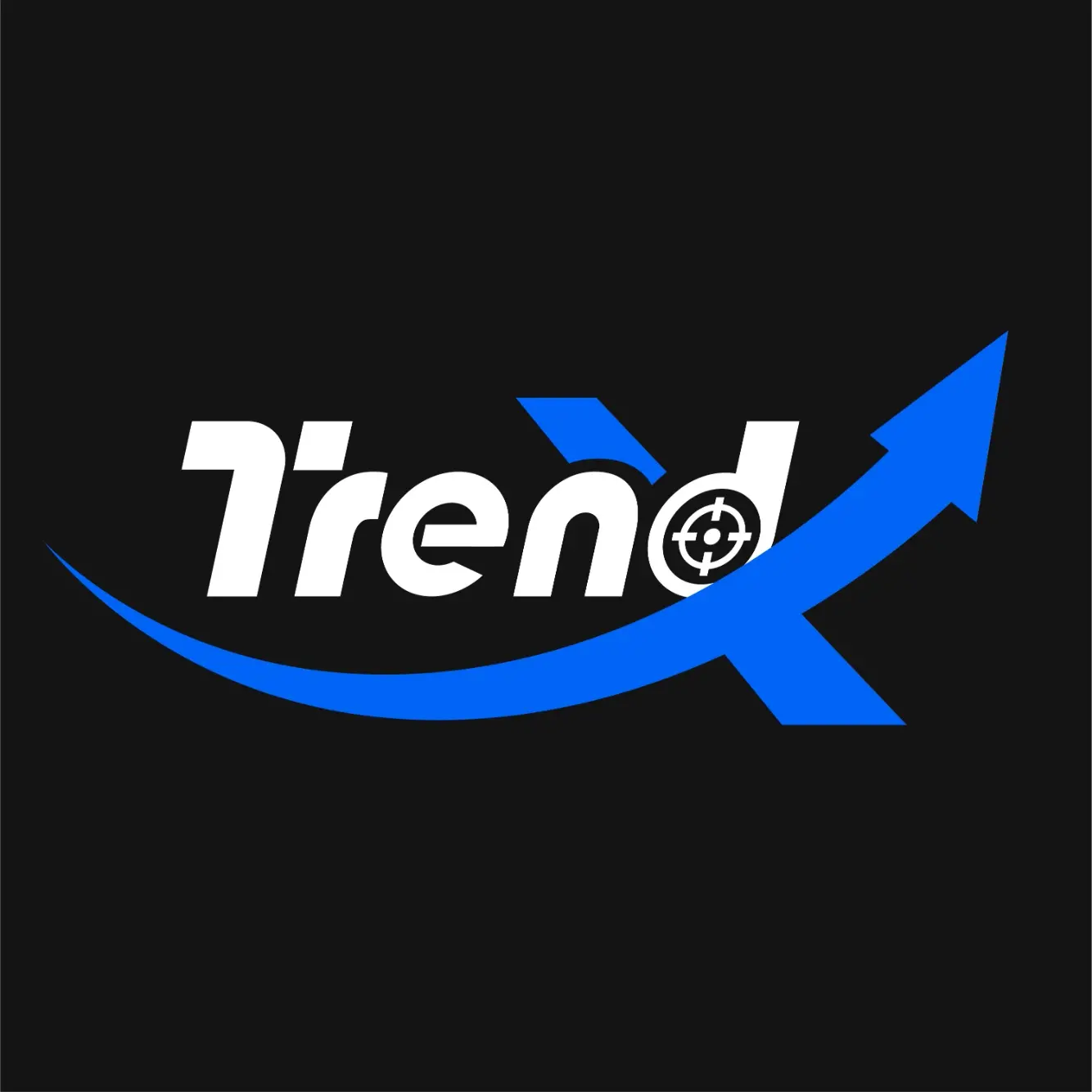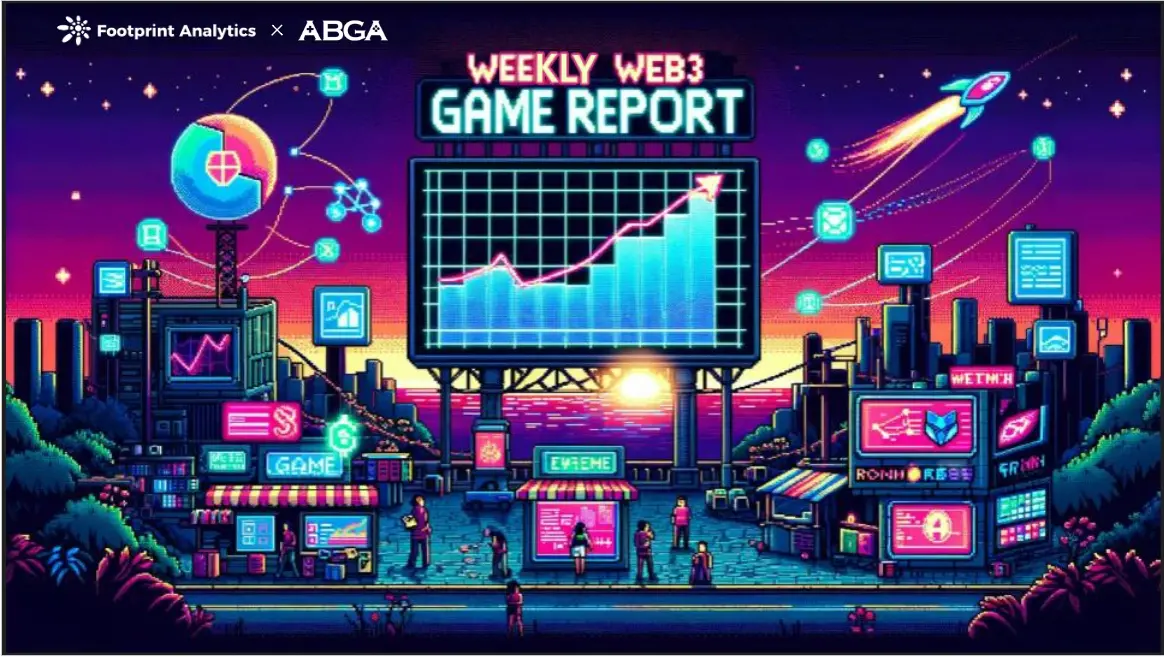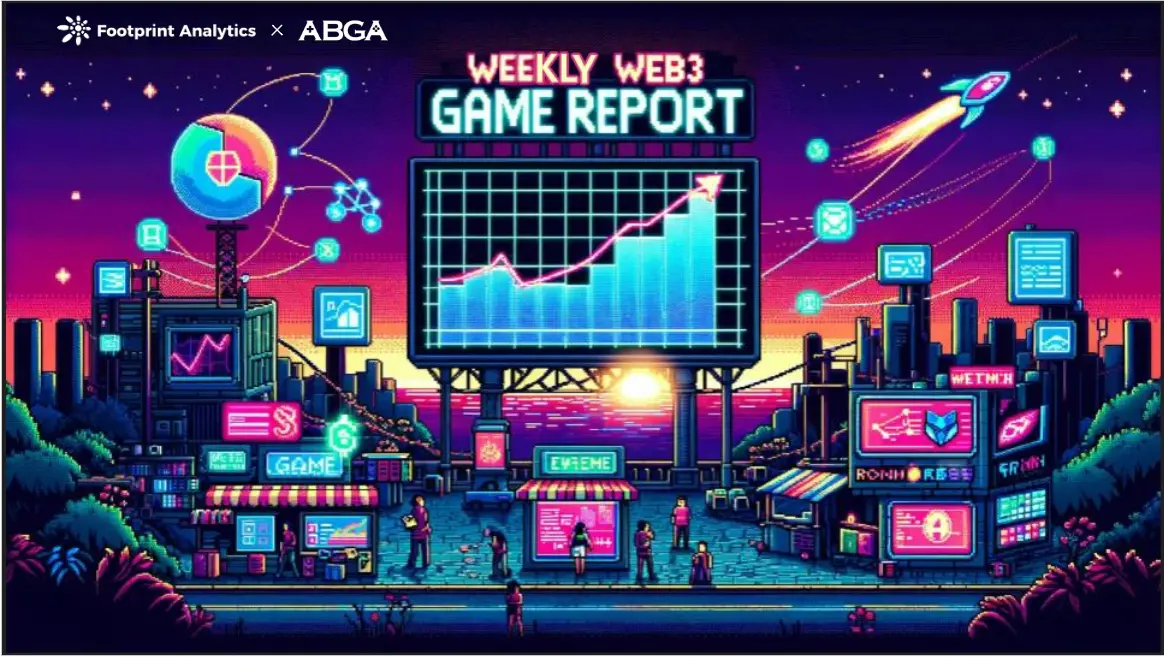Why is everyone creating Crypto Game platforms?
Author: VeDAO
Recently, DeGame released the GameFi sector analysis report for Q1 2023. The VeDAO Research Institute observed some interesting data in the report, reflecting the current development status of the GameFi industry, while also providing some foresight into the future of the sector. Therefore, in this article, the VeDAO Research Institute will explore the development context and future direction of the GameFi sector together with everyone, using DeGame's report as a starting point.
To start with the conclusion, overall, the GameFi sector still appears to be sluggish, contrasting sharply with the heat of 2022. On the other hand, there is a very interesting phenomenon: a considerable number of Crypto Game projects have ultimately chosen to platform themselves…
Current Development Status of the Crypto Game Sector
Despite the market gradually warming up, the Crypto Game concept seems to be less than satisfactory. According to DeGame data, in Q1 of this year, the total trading volume of the entire GameFi sector was $420 billion, with the total number of players around 700,000, most of whom are distributed on the traditional GameFi public chain WAX. Other chains like BNB Chain and Polygon, which host a large number of GameFi projects, have many GameFi products, but the players and funds attracted are extremely scarce.
This is largely related to the outdated GameFi concept, low product quality, and the short lifecycle of economic flywheels. Given the mixed quality of GameFi products, investment institutions are gradually beginning to view this sector more rationally.
According to DeGame data, in Q2 2022, the GameFi sector raised $1 billion in total financing for the entire quarter, with independent game financing accounting for 40.06% ($403 million) and game studio financing accounting for 30.64% ($308 million). It is estimated that platform financing accounts for about 30%, around $300 million.
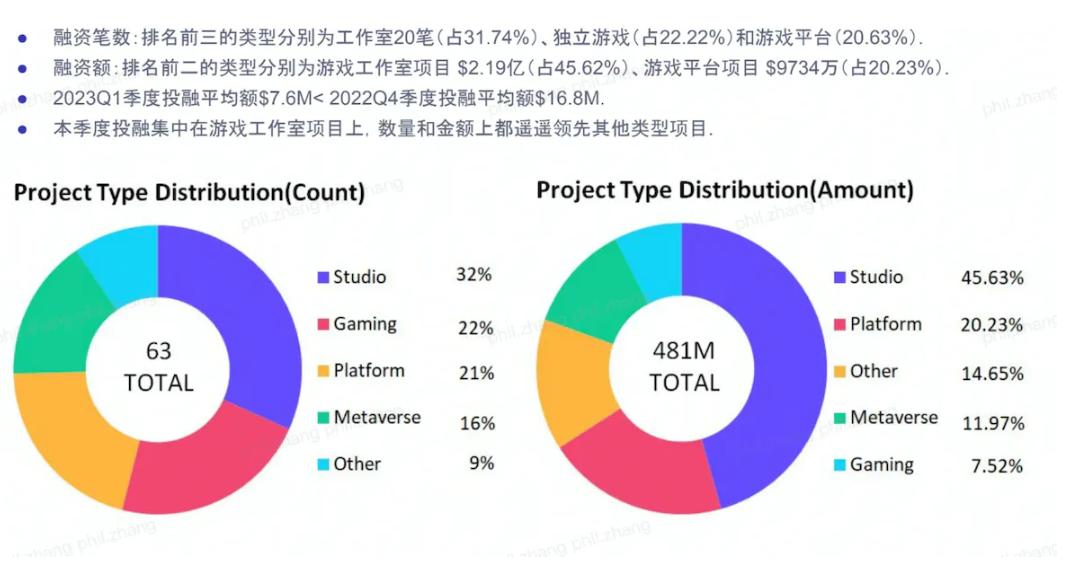
Image source: DeGame Q1 2023 GameFi report
In Q1 of this year, under the premise of a significant shrinkage in overall financing, with a total of only $481 million, platform projects ranked second in financing amount, accounting for 20.23%, close to $100 million, while game studio financing accounted for 45.62%, amounting to $219.5 million, and independent game financing dropped to below 25%.
In terms of the number of financing rounds, independent game financing accounted for 22.22% (14 rounds) in Q1 of this year. This is starkly different from Q1 and Q2 of 2022, when independent games were the most favored type of financing, accounting for 61.17% (63 rounds) and 52% (52 rounds) of the total financing rounds, respectively. This indicates that independent games are gradually losing the favor of capital. In contrast, the number of financing rounds for game studios and platform projects has significantly increased.
The proportion of financing rounds for game studios in Q1 and Q2 of 2022 was 26.21% and 11%, respectively, while in Q1 of this year it was 31.74%; for platform projects, the proportions in Q1 and Q2 of 2022 were 4.85% and 13%, respectively, while in Q1 of this year it was 20.63%.
Note: In the gaming context, studios are generally development teams supported by large Web2/Web3 companies; the latter refers to aggregation products that encompass more than one game.
From the above data, we can clearly see that as the GameFi concept develops, the capital market's interest in low-quality, simple gameplay, high-risk single GameFi products is declining, while interest in game products developed by traditional large companies entering the market as studios is gradually increasing.
Moreover, the current development status of GameFi also reflects a phenomenon: most Web3 teams are beginning to transform into game platform developers.
The most intuitive example is Axie Infinity, which was once a highly popular GameFi product, choosing to develop its own public chain and provide infrastructure services for third-party game releases. Additionally, Mirror World has also developed a mobile SDK toolkit aimed at optimizing user experience issues to attract more Web2 and Web3 users. The earlier metaverse public chain project Cocos-BCX also announced its GameFi platform plan at this year's Hong Kong Web3 conference and rebranded as COMBO, aiming to build the next generation of decentralized gaming infrastructure with a new name and image.
Even many traditional large companies entering the space have chosen to approach it as platforms. For example, Giant Network, which owns the classic IP "Journey," launched the ZTimes platform, aiming to create a gaming ecosystem while releasing GameFi products; one of the "Three Heroes of Kingsoft," Wang Feng, also launched his own Web3 game service platform, NAGA.
Why is everyone keen on building game platforms?
In summary, there are three reasons: the natural demand for incremental growth, the need to lower the entry barriers for external players/developers/funds, and the need to tell a bigger story and engage in consensus games.
First, whether for the entire Web3 industry or for major players within the industry, there is a natural motivation to continuously attract external traffic and capital based on their own development needs.
Since the total market capitalization of cryptocurrencies reached a historical high of $2.8 trillion in November 2021, it has only recovered to about 30% of that peak, around $1.1 trillion. The prolonged downturn has led to a mass exodus of funds from the market, and only with more money and people coming in can we hope to make crypto great again. DeFi is too cold; doing this in the name of gaming can yield much better results.
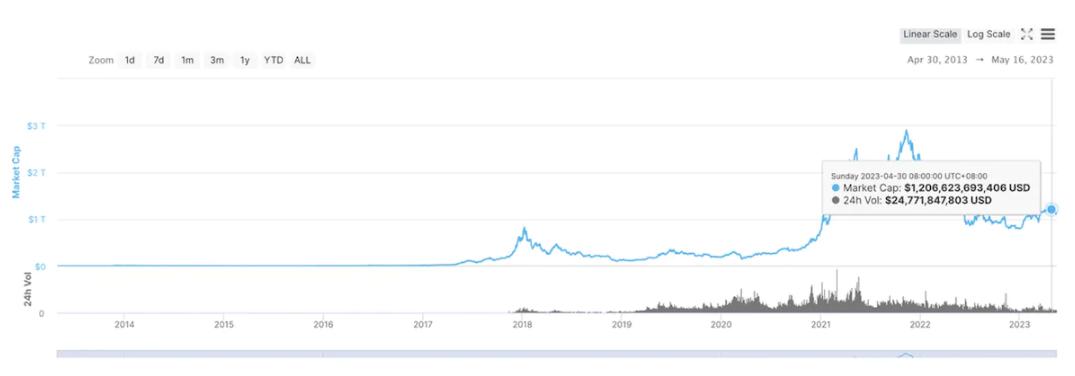
Moreover, a common issue in Web3 (which is also a challenge for breaking into mainstream) is the lack of universally applicable use cases.
Take BTC as an example; an application-less BTC absorbs half of the crypto market value, while the numerous applications in the altcoin ecosystem can only compete for the remaining small portion. As shown in the chart below, despite occasional fluctuations, the gap in market value between BTC and other ecosystems is narrowing. This is also one of the reasons why Ordinals have gained attention and why the BRC-20 protocol has emerged.
For companies represented by exchanges, the landing of application scenarios can both complete the siphoning of external traffic into the industry (this external traffic often directly lands on specific companies) and facilitate the introduction of industry traffic to the company.
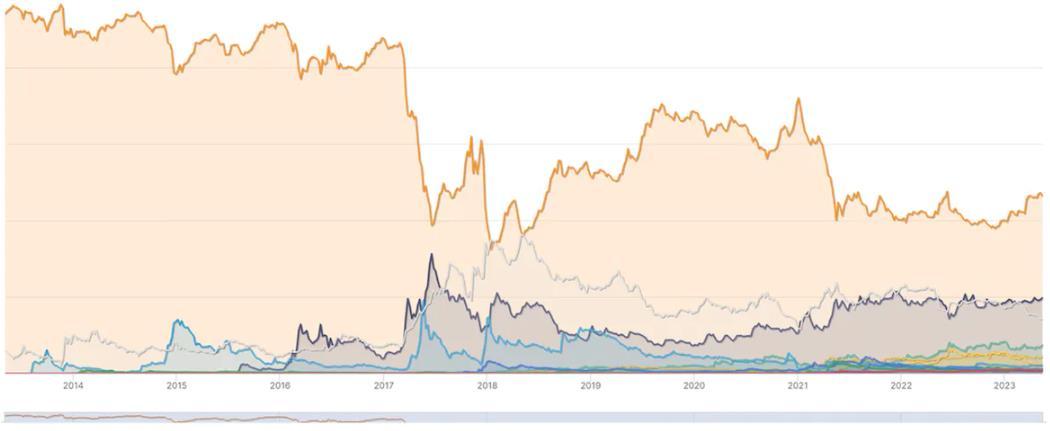
For startup teams, entering from the GameFi perspective can lead to a higher success rate in entrepreneurship. After all, in an ecosystem, a DEX with the same functions may ultimately only allow one to survive. However, GameFi products with similar gameplay but different content can coexist. This also provides more possibilities for startup teams to succeed. Therefore, in the past two years, we have seen a continuous emergence of GameFi projects and financing information.
It seems that the blockchain gaming field is attracting talent and funds from various sectors like never before. For instance, former CEO of Riot Games Asia Pacific and the former head of TikTok's gaming department have both founded blockchain gaming companies. However, it is undeniable that there is a natural gap between traditional players and on-chain players in their views and pursuits regarding games.
Traditional game companies crudely implant tokens and NFTs into games; traditional game publishers view putting game assets on-chain as an act of profit extraction; traditional game players believe that the incorporation of NFT elements disrupts the gaming experience…
How to further eliminate these differences and provide blockchain reform services for games may be a good idea. From the perspective of web2 game developers, entering web3 is quite difficult, as putting data on-chain, distributing airdrops, managing tokens, and handling NFTs all require a certain level of industry understanding along with cumbersome work. This is not friendly for developers.
The role of platforms is thus highlighted, as they can integrate solutions for GameFi-related technologies, NFT/blind box issuance, management and sales; token airdrop management, token locking, and team token allocation locking, among other related tools. These functions can help developers quickly get started with some web3 functionalities, achieving one-stop deployment of on-chain game management tools through convenient methods and interfaces. These features effectively break down the barriers from web2 to web3, facilitating the on-chain transition of games and providing possibilities for the rapid transformation of traditional games.
Furthermore, with the entry of traditional gaming giants, a new role has emerged for Crypto Games: Web3 game publishers, which are important drivers for helping games promote and reach the market. This task often can only be undertaken by platforms that aggregate multiple functions, such as Gala and YGG.
From the perspective of game platforms rather than single game products, in addition to the aforementioned objective factors, there is also a factor that is most attractive to the market and capital: compared to a single game, the platform itself has multiple game-theoretic relationships and sufficiently rich narratives that can bring about a long-tail expectation.
The Internal Drive from Games to Platforms
First, we cannot deny the profound financial attributes behind GameFi, and behind finance lies the concept of games.
Participating in market behavior means engaging in game behavior. To win, a participant must act below the average consensus after assessing the average consensus of all participants in the market. If a participant's behavior exceeds the average consensus, they will inevitably fail.
Here, we need to introduce a small numerical game.
In Richard Thaler's book "Misbehaving," a fascinating game is proposed: Guess 2/3 of the average.
Each participant is asked to choose an integer from 0 to 100. The participant whose chosen number is closest to 2/3 of the average of all users wins the game. For example, if there are three participants who guess 20, 30, and 40, the average is 30, and 2/3 of that is 20. Therefore, the person who guessed 20 is the winner.
In this game, if there are only two participants, there is a strictly dominated strategy (a strategy that is the best for a player regardless of what the other player does). Choosing 0 has a higher chance of winning than choosing any number greater than 0.
For instance, if one player chooses 0 and the other chooses 100, the average of 2/3 is 50*2/3=33.3. Since 0 is closer to 33.3, the player who chose 0 wins. When the number of participants exceeds 2, we face a more complex situation, as the presence of new players forces all players to reassess the psychology and behavior of others. The winning strategy shifts from a strictly dominated strategy to a relatively dominant strategy.
In a two-player game, the essence is to see who has the smaller number, while in a multiplayer game, players have greater freedom in their strategies. The essence of the game is for each player to estimate the average number of others. Therefore, simply choosing 0 will not help you win. Thus, in a multiplayer game, the key question is not when the Nash equilibrium will ultimately arrive, but how far the current system is from achieving Nash equilibrium, considering all participants in the game.
For example, the first time a group of users plays this game, the choice distribution might look like this: over 6% of users choose 33, nearly 6% choose 22, and the final winning number is 19. If these users participate in the second game, it can be anticipated that the winning number will be closer to 0. When all participants realize that the integer "0" is the final solution, no one will be a loser in the game. Ironically, the game simultaneously declares its end, and there are no real winners.
As a classic game in the field of finance, the "Guess 2/3 of the Average" game paradigm is reflected in the blockchain players' cognition of project information, token price expectations, and the game of future business operations.
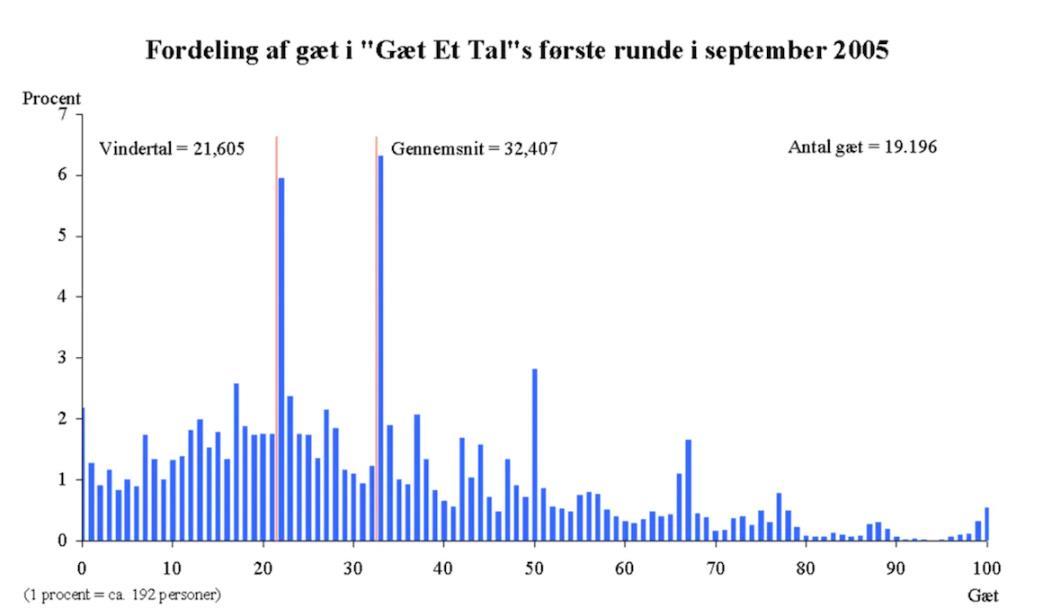
Regardless of the outcome, the Nash equilibrium will always arrive, and the equilibrium of GameFi often comes too quickly: a game with a lifecycle of 3 months typically falls into a death spiral.
This is the drawback of a single game; a story is always told quickly, but if other stories are introduced when one story is about to end, or if a complex story is told from the beginning, the expectations can grow exponentially.
There are currently two approaches to complicating simple stories: one is to endow game behavior with more real value, which is not the current mainstream. For example, SpartaDEX.
The more mainstream approach is still platformization, creating more possibilities. Taking Axie as an example, for the Axie development team and other participants with more complex identities within the community, they have a clearer understanding of the direction and outcome of the project when engaging in games with other participants. At the same time, they have a panoramic view of the average consensus among players, which facilitates their consensus management: continuously attracting external funds, creating new gaming methods, transforming speculators into value investors, and finding new use cases for tokens.
Axie Infinity is also actively exploring new identities. The launch of the Ronin sidechain and its native infrastructure, along with the development of multiple new projects, has transformed Sky Mavis (the parent company of Axie Infinity) from an application developer to an infrastructure provider. In other words, current "game" players can seamlessly participate in the next round of new consensus games.
Every consensus game will have an ending, but at the same time, new consensus games will continue to emerge. This also provides many GameFi project teams with a convenient idea: to transfer value to the platform rather than to the game. After all, the narrative of a game is very short, but if it is platformized and connects more games, making the platform prosperous, then this story can be told for a long time.


